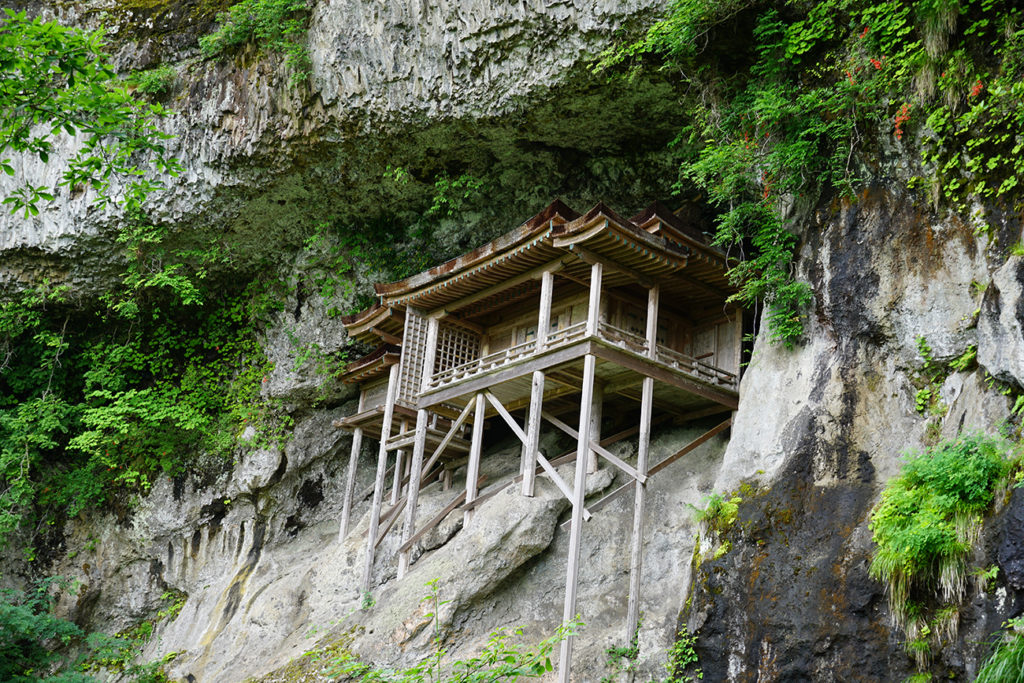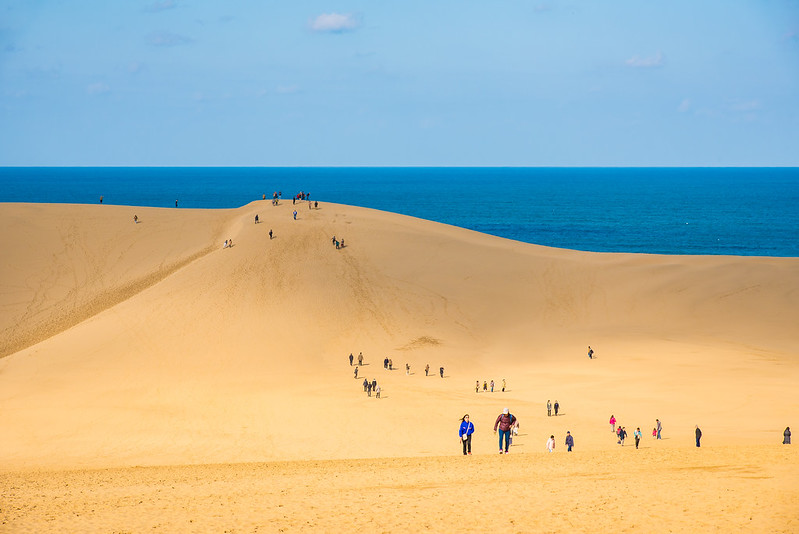
Discovering Tottori Prefecture
Tottori Prefecture (鳥取県 Tottori-ken) in the Chūgoku region of Japan is the least populated prefecture in the country but is still one of the most beautiful places to visit. One of Tottori’s more popular places to visit is the Tottori Sand Dunes, Japan’s largest dune system. It spans roughly about 16 kilometers of coast along the Sea of Japan, is about two kilometers wide and 50 meters high, and is part of the Sanin Kaigan National Park. Another picturesque attraction is the white-walled warehouses by Tama River in Kurayoshi City at the central Tottori Prefecture.
Totori sand dunes.
Tottori also has a rich history, early settlers were from the prehistoric period of Japan. This is evidenced by remains from the Jōmon period (14,000 – 300 BC). Tottori Prefecture is also known to have the largest prehistoric settlement remains from the Yayoi period (300 BC – 250 AD), the Mukibanda Yayoi remains, at the foothills of Mount Daisen, the highest mountain in the Chūgoku region. There are several kofun tumuli from the Kofun period (250 – 538) that are found all across the Tottori.
Rice fields at the foot of Mount Daisen.
The Genpei War (1180–1185) between the Taira and Minamoto clans during the late-Heian period saw the two temples of Tottori, Daisen-ji and Sanbutsu-ji as the base for anti-Taira forces. Towards the beginning of the Kamakura period (1185–1333) shōen estates were established to support the Imperial court and other temples. Different clans controlled the region during the Sengoku period (15th to 17th century), the most popular was the Yamana clan. After the Battle of Sekigahara in 1600, the region was pacified and the Tokugawa shogunate granted the Ikeda clan Tottori Castle. The Ikeda clan retained control of Tottori all throughout the Edo period with all of the prefecture’s resources supporting the shogunate.
Sanbutsu-ji Temple on Mount Mitoku.
Tottori Prefecture was hit by a massive magnitude 7.2 earthquake known in history as the 1943 Tottori earthquake. This destroyed 80% of the city of Tottori, and greatly damaged the surrounding area. Tottori’s endearing small town community and abundant culture and history makes it a wonderful place to visit and create memories that would last a lifetime.



